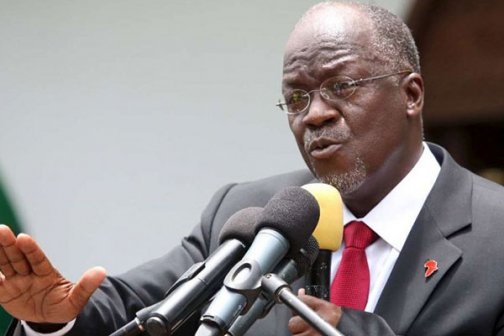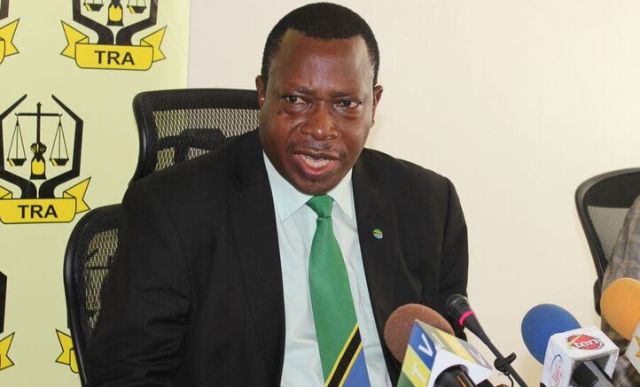By TZ Business News Staff.
Tanzania entered the second year under a new administration led by President John Pombe Magufuli this November 2016 a hopeful nation. Although there is widespread discomfort with a tight monetary policy, analysis points to a country starting to see signs of a prosperous nation in 2017–which is only a couple of weeks away. Government expenditure should bring some relief.
Economists do not unanimously agree ‘big government’ spurs economic growth because it can create an unbearable tax burden to the productive sectors of business, but it is big government spending that also releases money into the economy.
It is generally agreed government expenditure makes funds accessible to those same productive sectors as will be the case this coming 2017 when the Magufuli administration starts to spend Tsh. 16.86 trillion from the 2016/2017 government budget after the recently completed removal of fictitious expenditure on the budget. It is reasonable to anticipate business wheels will start to move from the very first quarter of 2017, on the bet spending on infrastructure will peak up.
The Tanzania government outlined revenue sources in the 2016/17 budget to include tax revenue (Tsh.10.17 trillion), non tax revenue (Tsh 967.2 billion), local Govt Authorities (LGA) (Tsh. 344.1 billion), which was projected to bring a total of Tsh 11.4813 trillion according to an analysis by FB Attorneys.
The 2016/17 budget anticipated grants and concessional loans at Tsh. 2.32 trillion from Development Partners with Actual amount received as grants and concessional loans at Tsh. 1.15 trillion. Government domestic borrowing was projected at Tsh 3.94 billion with foreign borrowing in which the Government had concluded arrangements with the African Development Bank (AfDB) for a USD 674.3 million loan to finance transport sector projects( Dar Bus Rapid Transport) and Arusha water and sanitation project.
On the expenditure side, the Government released the figures Tsh. 16.86 trillion out of which Tsh. 13.65 trillion would be for recurrent expenditure, and Tsh 3.21 trillion for development expenditure. The budgeted development projects to be financed through domestic sources were planned to include rural electrification; construction and rehabilitation of roads and bridges; rehabilitation of the central railway line; construction of Kinyerezi I and II power generating plants; and the supply of water in urban and rural areas .
The Tanzania Revenue Authority has announced repeatedly since the beginning of 2016 it is surpassing its tax collection targets, with the most recent announcement made in August, 2016 when the authority announced it had surpassed its revenue collection target when it collected Tsh. 1.158 trillion/- against the target of 1.152 trillion/- for the period. The amount collected exceeded the target by 100. 57 per cent. The collection compares to the Tsh. 923bn/- collected during a similar period in 2015.
The TRA Spokesperson Richard Kayombo said this success resulted from strategies laid out to ensure targets were met for the year 2016.
No development partners have withdrawn pledges to support Tanzania’s development effort, with the exception of the United States of America which has withdrawn its USD 412 million to protest a flawed election in Zanzibar. The Funding had been pledged through the American Millennium Challenge Corporation (MCC).
POINT OF HOPE
Although indicators exist Government debt is big and maybe even getting bigger, the only serious worry in 2017 will be consistency in the patriotic, selfless management of public funds. Economists generally agree that government spending becomes a burden either because government becomes too large or because outlays are misallocated. The key question they use to make the judgement is public benefit. Misuse of public funds is definitely not beneficial to any country at large. Public benefits from the size of government is therefore the deciding factor.
The Tanzania Minister of Finance Dr Philip Mpango told the National Assembly in Dodoma in mid-2016 that the national debt stock stood at US$ 20.94 billion as of March 2016 compared to US$ 19.69 billion as of June 2015, representing an increase of 6.34 per cent.
“Out of this amount, public debt was US$ 17.93 billion and private external debt was US$ 3.01 billion,” he said, adding that “The public debt increased by 6.01 per cent compared to US$ 16.92 billion in June 2015.”
The increase in debt stock was attributed to new borrowing to finance various big development projects including the Bus Rapid Transit (BRT) System, the expansion of the Julius Nyerere International Airport and of the Ruvu Water Treatment Plant, the Strategic Cities Project, as well as construction of the 240-MW Kinyerezi II Gas-Fired Power Plant, the Mtwara-Dar es Salaam Natural Gas Pipeline, the Arusha – Holili/Taveta – Voi Road, the Nyerere Bridge and other development projects.
There is widespread fear in Tanzania the President makes more threats against corruption than he takes substantial action. This implies a danger larks public funds will be misused as has been the case in the past. If the misuse of public funds is abated as president Magufuli has promised, then Tanzania is heading toward prosperity in 2017 and the years to come. Government debts will be cleared!
The Journalist Joseph Burite recently reported for Bloomberg News about Tanzania’s impending prosperity. The country, which has at least 57 trillion cubic feet of natural gas reserves, plans to commission a plant by 2025 to process as much as 11.1 trillion cubic feet.
The Ministry of Energy’s plan estimates that the East African nation can recover as much as 70 percent of the resource. It also projects total demand at 32.5 trillion cubic feet over three decades, with 8.8 trillion cubic feet going to power generation, according to a document handed to reporters in the commercial capital, Dar es Salaam.
Tanzania utilizes about 33 billion cubic feet each year to generate 711 megawatts of electricity, according to the document. The nation plans to export at least 3.1 trillion cubic feet of natural gas to East and Southern Africa in the 30 years through 2045 as global prices drop.
“Declining global prices mean regional markets maybe be a better option to monetize the resource,” according to the plan. Global production of natural gas is forecast to grow 7.6 percent each year to reach 500 million tons per year in 2030, according to the International Gas Union.
“Tanzania should not necessarily start allocating gas ratios as that might encourage the growth of unsustainable industries,” Paul Hogarth, an upstream commercial team leader at London-based BG Group said at a conference in Dar es Salaam.
The Tanzania government has in the meantime set an economic growth target of 7.5 percent in 2017, compared to the estimated 7.2 percent in 2016. But it also plans to hike spending in the 2017/18 fiscal year by 11.5%, Reuters reported. The economy grew by 7 percent in 2015, driven by transport, construction, communications and financial sectors.
The macroeconomic objectives of the government … are to attain gross domestic product growth (GDP) of 7.5 percent in 2017, followed by 7.9 percent in 2018, Reuters quoted the Finance and Planning Minister as saying recently. Mpango said the government was targeting a fiscal deficit, including grants, of not more than 4.5 percent of GDP in the medium term.
Domestic revenues in 2017/17 fiscal year were expected to climb to 32.9 trillion shillings, up from 29.54 trillion shillings in 2016/17, he said. Government spending over the next fiscal year will focus on infrastructure projects, education, health and water projects, he said.





